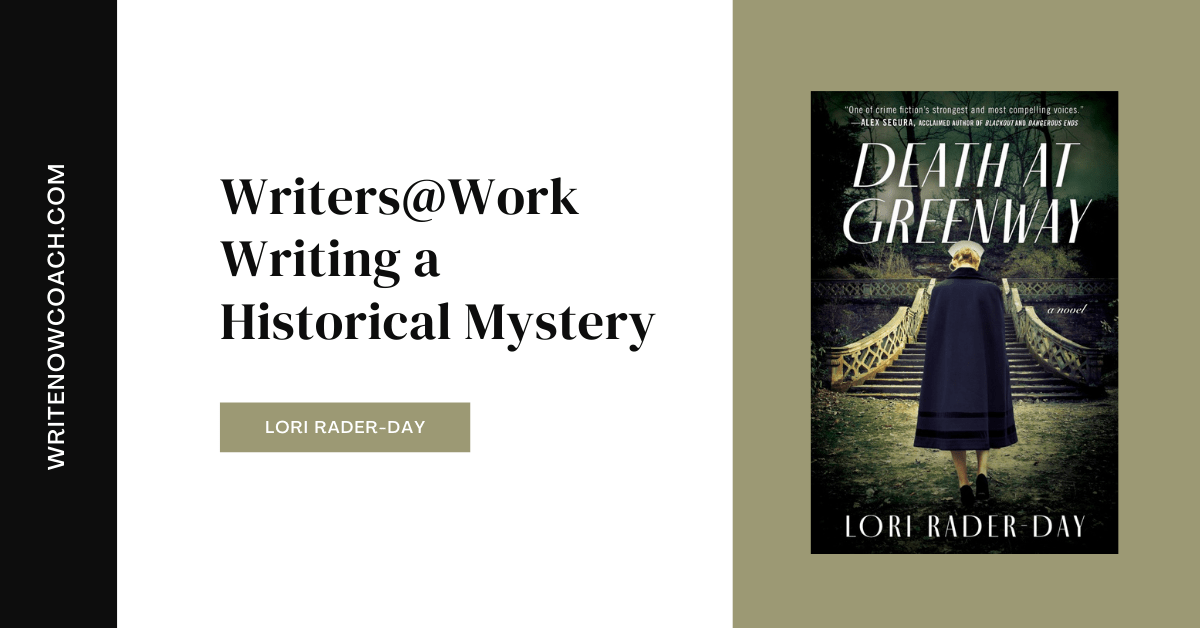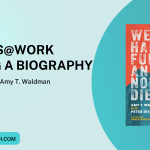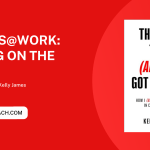Writing a Historical Mystery
October 5, 2021
Note From Rochelle
Dear Writers,
I have a favor to ask you (again).
Mightier than the Sword needs some review love. If you’ve read the book or even just skimmed it, please write a review and post it on Amazon. If you have time, you could also post that review on B&N, Goodreads, and Target. It takes just a moment to post your review, and it means a lot!
And whether you’ve read the book or not, please ask your local library and bookstores to carry Mightier than the Sword! Most libraries have a form online that you can use to request a book. If not, you can print out the blurb on the homepage of my website and share it with them.
Today I’m delighted to welcome my colleague and friend, Lori Rader-Day, whose spectacular new book Death at Greenway comes out October 12. If you live in the Milwaukee area, Lori will be appearing at the Sharon Lynne Wilson Center on October 27. You can purchase tickets at the Books and Company website.
Happy writing,
Rochelle, the Write Now! Coach
Writers@Work: Writing a Historical Mystery
An Interview with Lori Rader-Day
By Rochelle Melander
Welcome, Lori! Can you tell us about your new book, Death at Greenway.
Death at Greenway is based on a little-known fact from World War II: When Britain was evacuating London ahead of what would become known as the Blitz—three million people, mostly children—ten children were sent to Agatha Christie’s holiday home, Greenway. I discovered this in a nonfiction book about Agatha Christie, and just had to read it. But no one had written it. I figured out why pretty quickly: The Greenway ’vacs were all under the age of five! They were chaperoned by a married couple called Arbuthnot and two hospital nurses, according to Agatha Christie’s autobiography, and lived in the house for a short time before the house was requisitioned by the military. To work a crime story in, I grabbed onto those nurses and got them into a lot of trouble.
Bridget Kelly is a nurse in training who has made an error that cost a man’s life. To get back into her Matron’s good graces, she takes on an assignment to evacuate a group of children to the country. It’s really the last thing she wants to do, and Greenway is a place with a lot of rooms one can’t enter and lovely little breakable things the children can’t touch. And a library full of murder books. When a body washes ashore nearby and the other nurse, also Bridget Kelly but known as Gigi, is not what she says she is, Bridey has to keep Gigi’s secrets to keep her own.
This is your first historical mystery—what were some of the challenges you faced writing it?
What I wanted to do for Death at Greenway was to find and use as much history as I could, and when I ran out of fact, rely on fiction. That set a pretty high bar for a first historical novel, I think. I love to read historical novels that let you live in a time and place through rich details—that was my goal.
The problem was this story had never been entirely pulled together by anyone else. I kept finding more and more history that was relevant and important. The project evolved as I dug in; I had to scrap some early pages when the history didn’t match the fiction. Friends would suggest I could just change things to fit the story I wanted to tell, but I didn’t set out to do an entirely fictional account.
The other problem was that I am not a researching kind of person. At least I didn’t use to be!
Another challenge was that this was all going down during a hard year in my life, my father just having died, and then a hard year in the life of all of us, with the pandemic. It became obvious at the outset of 2020 that I wanted to rewrite Death at Greenway. So that’s what I did with my early pandemic: I hunkered down away from everyone and went to Greenway again. That revision made the book so much more what I had hoped it would be, and as a bonus I understood the isolation of my characters so much better this time around.
What advice would you give to writers who want to write a historical mystery?
Do the research and have fun with it. My favorite kind of research, beyond collecting far more books than I could ever read, has always been to visit locations. For many of my books, I used locations I knew really well, but when I started writing about places I knew less well (Under a Dark Sky, for instance) it was really important to visit and get a feel for the place. For Death at Greenway, I visited Greenway as a tourist once, just for the day, and then went back in 2019 (just in time!) to stay there for three days as the guest of the National Trust. Those three days made all the difference, because we were able to live at the house as the group would have done, walk the grounds and into the nearest village (two miles away), through the woods, listen for the sounds of the place, hear the voices. I’m so lucky to have had that opportunity.
But if you can’t get to a location, work all the angles online that you can, and ask people who have been there, and talk to locals. If you can include a few things that will ring true for people who know that location or time, those details go a long way to put readers in the place and time of your story.
I love that your books have such well-developed characters. What are some tools that you use to create good characters?
I’m a write-by-the-seat-of-my-pants type author, so a lot of what I use to develop character can be summed up in one word: revision. I rely on revision to help me make everything I write deeper and better. For character, I might do some noodling in a notebook to figure out who someone is. One single idea about a character can make the difference, like when I went into lockdown and, watching everyone else (it seemed to me) thrive in the pandemic, thinking to myself: I don’t have the Blitz spirit. And that was Bridey, I realized. She wanted to be a nurse and she wasn’t getting what she wanted. She didn’t want to chaperone a group of evacuated children. But I had to dig deeper even still past that, and that’s my best advice. Dig down, dig down again, ask yourself why, why, why until you hit the bedrock of your character’s deepest fear, the thing they think about themselves that they would never tell another person. And then you tell it for them.

I don’t use character bibles or anything like that. I learn as I write, and then I revise to fold it all in. I did find that research, in the case of Death at Greenway, was generative for character. I would learn something in genealogy research about the real people of Greenway that would make me understand something very crucial about how they must have lived or felt. I used it all. These characters are fiction, of course. I couldn’t know the real people entirely, but I hope I gave the characters based upon them some of the humanity they had in real life.
What two or three books are you reading and recommending now?
Catriona McPherson’s Gingerbread House, Laura McHugh’s What’s Done in Darkness, Nev March’s Murder in Old Bombay, Kate Summerscale’s The Haunting of Alma Fielding and everything Tracy Clark cares to write. OK I’ll stop.

Justin Barbin Photography
About the author. Lori Rader-Day is the Edgar Award-nominated and Anthony Award- and Mary Higgins Clark Award-winning author of The Lucky One, Under a Dark Sky, The Day I Died, Little Pretty Things, and The Black Hour. She co-chairs the mystery conference Murder and Mayhem in Chicago and is a former national president of Sisters in Crime. Her new book, Death at Greenway, is based on a little-known moment in history, when a group of Londoners were evacuated from the Blitz during World War II to Agatha Christie’s holiday estate.















